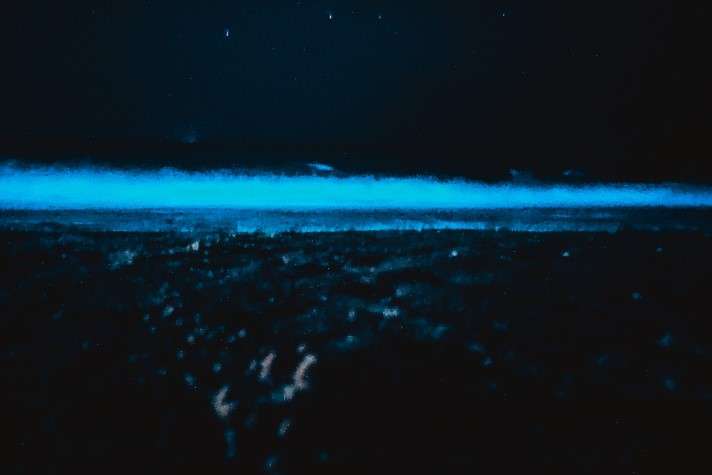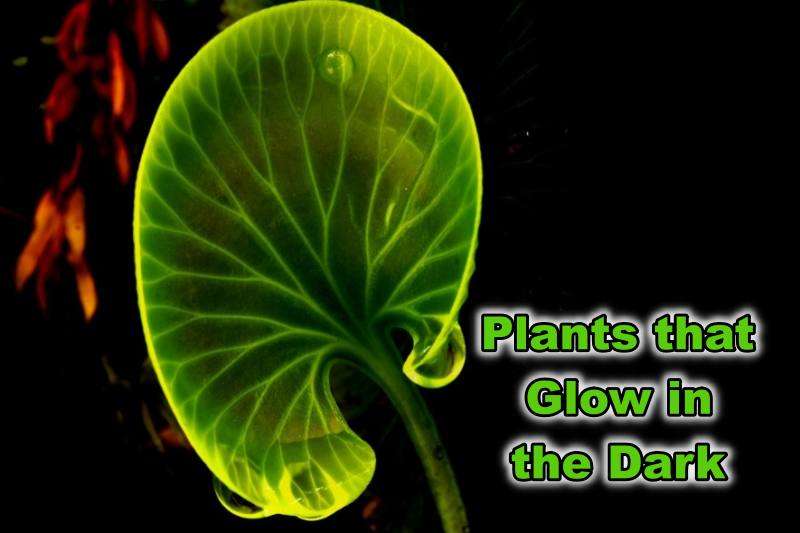Bioluminescence is a wonder of nature. It is also incredibly beautiful to witness. Though it is not really abundant in nature, it’s not uncommon either. A lot of living beings show this property in their biology. And while these living beings include animals and some fungi, plants are not really there in the category. That is because there aren’t naturally bioluminescent plants found in nature.
But scientists have been working on it by crossing plant genes with the genes of bioluminescent bacteria. The work is still in progress, but it already has interesting results. In this article, we’ll be talking about bioluminescence and the plants that glow in the dark.
What is Bioluminescence?
Bioluminescence is the phenomenon where a living being creates light on its own inside its body by chemical reactions. This is mostly found in fishes inhibiting the deep sea where light doesn’t reach properly and in some insects.

The light created by bioluminescence is usually blue-colored as the wavelength of blue light travels best in water. But yellow-green, red, and violet colors have also been recorded. Deep sea animals like Anglerfish, Lantern fish, and some jellyfish and sharks exhibit bioluminescence.
As with everything in nature, there is a functionality to bioluminescence also. It is often a necessary and important tool to lure the prey and even light the area to see better. Some other uses of bioluminescence include camouflage, communication, warning, defense, and mimicry.
The light from bioluminescence is caused by the chemical reactions which occur in a special organ called the photophore. The photophore contains luciferin and luciferase, which begin chemical reactions in the presence of oxygen.
Bioluminescence is not only found in animals but also in fungi, algae, and bacteria. Twenty-nine species of bacteria, all of them belonging to the class Gammaproteobacteria, show bioluminescence.
A lot of these bacteria are used for their bioluminescent genes to make bioluminescent plants. As of yet, there are 112 species of bioluminescent fungi discovered in nature. Some algae, more commonly Dinoflagellates, also exhibit bioluminescence.
Bioluminescent Plants
Naturally, bioluminescent plants may still be just an idea as of yet, but that won’t stop scientists from trying to make the plants glow. In fact, scientists have already engineered plants that glow in the dark.

Previously researchers worked on tobacco plants and mixed their genes with the genes of bioluminescent bacteria. The experiment was successful, resulting in the tobacco plants glowing. But it came with its own problem since it affected the health of the plant.
But now researchers are taking bioluminescent fungi to provide the glowing genes to mix with plant genes. The resulting plants exhibit a much brighter light that is visible to the naked eye.
According to a researcher working on this project, bioluminescent bacteria genes are able to induce autonomous bioluminescence but do not produce sufficient light.
With the bioluminescent fungi gene, though, this problem is solved. The tobacco plants Nicotiana tabacum and Nicotiana benthamiana, engineered with the genes of bioluminescent fungi, give off around a billion photons in a minute which is not exactly bright but enough to be visible to the naked eye.
Also, these newly engineered plants do not need any exogenous element to glow. In fact, bioluminescence in these plants can be witnessed from seedlings to adult forms.
The researchers explained that the newly engineered bioluminescence in tobacco plants is the result of the caffeic acid cycle, which is responsible for the glow in bioluminescent fungi.
Unlike bioluminescent bacteria genes, which affect the health of plants, the caffeic acid cycle is not harmful and doesn’t take a toll on plant health.
The research also shows that plants can glow all day without any inducement. The younger parts of the plants glow brighter than the rest, but it’s the flowers that glow the brightest in the bioluminescent plants.
The bioluminescent plants are really a wonder, and the scientists deserve kudos for their hard and awe-inspiring work. With the way things are going, we’ll soon get to have our glowing garden. Let’s hope that day comes soon.
Liked this piece? Don’t forget to check out our other article with exciting nature-related topics. And leave a comment for us to let us know your thoughts. We’ll be back with more interesting stuff.
Also Read:
Anamika has a fascination with all living things. Being a Zoology student, she loves to know new interesting things about animals. She’s also a very keen fan of manga and anime. Writing is her passion, and writing about her favorite things is her boost of serotonin.

